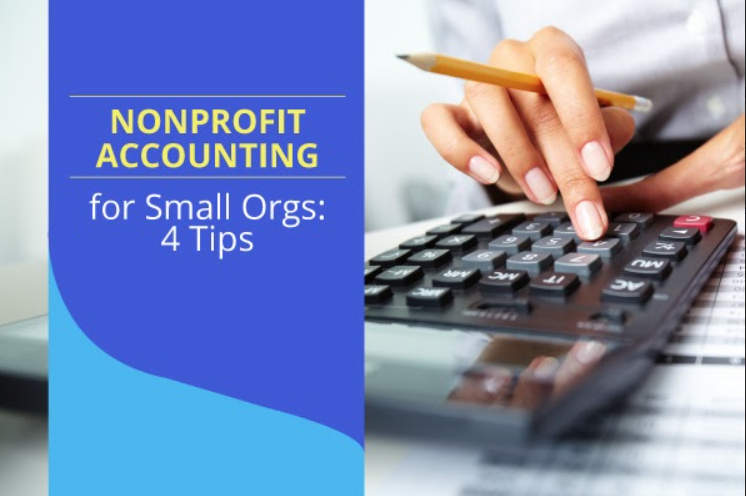 When it comes to maintaining the growth and success of nonprofit organizations, effective accounting practices are the unsung heroes of the nonprofit sector.
When it comes to maintaining the growth and success of nonprofit organizations, effective accounting practices are the unsung heroes of the nonprofit sector.
Nonprofit accounting consists of the practices necessary for the organization to analyze and act upon critical financial data, such as fundraising revenue, donation data, and the allocation of funds throughout your organization. This not only allows nonprofits to better understand their operations, but it enables them to form actionable strategies to maximize their funding.
Yet despite the importance of these operations, many nonprofit professionals have a very limited understanding of accounting. Especially for newer or smaller nonprofits, this can lead to critically wasted funds and missed opportunities, with items such as their 990-N postcard and other programs falling through the cracks.
Luckily, we’ve come up with a few tips and tricks to completely optimize your organization’s accounting practices. Over the course of this short guide, we will cover the following accounting essentials:
- Understanding how the Form 990 EZ and 990-N differ.
- Studying your annual requirements from the IRS.
- Comparing past budgets before building a new one.
- Investing in nonprofit tax filing and accounting software.
With more limited budgets and resources, smaller organizations should take full advantage of their accounting techniques to ensure that every dollar of revenue is being used as effectively as possible. These insights will help your organization boost healthy financial habits and establish effective processes.
Ready to optimize your accounting strategies? Let’s get started.
Understand how the Form 990 EZ and 990-N differ.
You don’t have to be a nonprofit accountant to have heard of the Form 990. This is the form that determines the IRS tax-exempt status of many nonprofits, and it is one of the most fundamental financial reportage documents in the nonprofit world. The 990 EZ is like the little brother to the standard Form 990, making it easier and less time-consuming for qualifying organizations to fulfill annual tax requirements.
However, if your organization is very small or just getting started, you may be able to file an even simpler form. You could very well fall under the documentation status of Form 990-N.
Here are a few key differences between Form 990-N vs 990 EZ every nonprofit professional should know:
- Form 990-N. This document (also known as the 990 postcard) is meant for tax-exempt organizations that gross less than $50,000 annually. It’s an eight-question form that has no physical documentation system, so it must be signed, completed, and submitted online.
- Form 990 EZ. This document is a bit longer than the “postcard.” It’s a four-page form that is meant for tax-exempt organizations grossing between $50,000 and $200,000. Traditionally, this form could be submitted either electronically or physically. However, the Taxpayer First Act, enacted in 2019, made a push for all 990 tex forms to be submitted electronically.
Organizations that exceed $200,000 in gross revenue will file the standard Form 990 and private foundations will file a slightly different form, the Form 990-PF. However, as a small organization, understanding the fundamental differences between the Form 990-N and the Form 990 EZ is the first essential step into the world of nonprofit accounting. This will allow you to maintain your tax exemption status and insightfully navigate the changes in documentation as your organization grows.
Study your annual requirements from the IRS.
Consider this: a local nonprofit has just experienced a huge boom in its annual donations. They have found new donors from all across their community and emerge from the current fiscal year stronger than ever.
But in spite of this stream of incoming revenue, the organization soon experiences a huge blow that ruins their financial momentum. They’ve neglected to submit their Form 990 EZ to the IRS. By failing to check in on the document’s new submission date and missing the deadline for the 990 EZ, their organization incurs a fee of $20 per day for every day the form is late, creating a vacuum of wasted revenue.

The above image shows some of the penalties your organization could incur if you’re late filing your Form 990 EZ tax forms. Remembering your deadline is the first step to avoiding these fees. The deadline is generally the 15th day of the 5th month after your fiscal year ends. For organizations on the calendar fiscal year, this means your tax deadline is on May 15th each year.
However, keep in mind that these deadlines can change depending on the situation of the world. For example, the past year alone has seen dozens of updates and changes to tax accountability procedures. COVID-19 has affected deadlines, direct contact policies, new electronic filing standards, and a variety of other IRS documentation processes.
Keep an eye on the state and federal requirements so that you can keep track of and adhere to any changes.
Your nonprofit cannot afford to be behind on these current events and requirements. Nonprofit organizations big and small are dictated by the mandates of the IRS, and keeping up to date with their policies will lay the foundation for your financial success.
Compare past budgets before building a new one.
As you’re preparing to organize and launch your new annual budget, don’t forget to reference your most valuable resource: your past budgets! These documents offer your organization a detailed history of the major successes and challenges of your various campaigns and initiatives, allowing you to learn from your mistakes and make informed decisions for the future.
When reviewing your old budgets, look for discrepancies between your expected and actual revenue and expenses. For instance, you may find unexpected expenses associated with your annual overhead if you mispredicted the cost of your monthly utilities. Or, you may find that your organization overextended on certain projects, or even exceeded your anticipated revenue for a certain fundraiser. Study your records and keep in mind the circumstances and goals of each year to create intuitive budgets with predictions that closely match the revenue and expenses you’ll face in the coming year.
For example, as digital marketing and outreach methods have become so essential for remote engagement, your organization may consider allocating more revenue to cultivate virtual engagement techniques.
Additionally, fundraising campaigns are an especially large source of spending and incoming revenue that you should pay attention to. Study the allocation of funds and performances for past initiatives to create better campaigns for the current year. If you’d like to learn more, re:Charity’s guide to nonprofit fundraising strategies examines how data reportage, accounting, and technology can optimize your fundraising strategies.
However you go about managing your fundraising, donation, and outreach data, be sure to consult your records for previous campaigns. The most effective annual budgets strategies are not developed out of a vacuum, but informed by past information, strategies, and techniques that you’ve cultivated over time.
Invest in nonprofit tax filing and accounting software.
No matter the size of your nonprofit, your organization is subject to financial scrutiny by the IRS, grantors, and even donors. Therefore, you must do everything in your power to remain accountable to your funders and keep clean and organized records. This is where automated solutions become a lifesaver.
Some small nonprofits think that they’re too tiny to benefit from this kind of software. In an effort to conserve their limited funds, they determine that these services are a drain on their resources that they’re not ready to take on. Instead, they try to complete these filing procedures on their own.
These organizations often run into issues where they end up using another valuable resource — time — to create and refine reports that could have been automated. Plus, if your organization is manually handling all of your accounting and reporting procedures, you’re actually risking penalties far more costly than a subscription payment. Trying to juggle this entire process by hand will complicate accounting operations and leave your financial records vulnerable to human error.
The most helpful tool you can invest in is a tax solution to help make the Form 990 filing process as easy as possible each year. Effective solutions will help you ensure you don’t miss deadlines and provide confidence that all information is correct throughout the form.
If you choose manual accounting options, you’ll also miss out on all of the added features and benefits of this dedicated accounting technology. For example, the best e-filing platforms for your Form 990 EZ and 990-N are able to:
- Automatically complete large sections of the form based on information directly stored in the IRS database
- Send reminders when the form deadline is approaching so that you never miss it
- Transform confusing form sections into easy-to-understand and direct questions that your organization can answer with ease
- Highlight specific sections that are used for the determination of the exempt status
- File and store form returns from previous years
By comparison, filling out these forms without a software solution can take hours, are more likely to be completed with incorrect information, or could even be forgotten entirely. For more information on how to file your Form 990 and how this software can streamline the process, check out File990’s nonprofit master guide to filing Form 990 EZ.
Investing in the right software solutions is critical for more than just fundraising and marketing campaigns. Account data and tax form filing technology can streamline your accounting processes and set your nonprofit up for financial success. However, these solutions don’t need to drain your resources. Low-cost nonprofit accounting solutions options are available and can meet the exact needs of your organization.
While a great amount of attention is given to fundraising initiatives and other frontend campaigns, accounting operations work behind the scenes to keep nonprofits functioning properly.
Especially for smaller nonprofits, these intuitive insights can help you to avoid unnecessary penalties from the IRS, optimize your accounting efforts, and more efficiently manage financial operations across your entire organization.
 Mathew Tooker is an expert in sales forecasting, analytics, goal-setting, client growth, and business development. With experience serving the Greek life community, nonprofits, and other member-based associations, Mathew is dedicated to providing tremendous value to his clients.
Mathew Tooker is an expert in sales forecasting, analytics, goal-setting, client growth, and business development. With experience serving the Greek life community, nonprofits, and other member-based associations, Mathew is dedicated to providing tremendous value to his clients.
When he’s not moving organizations forward, you can find him on the golf course, spending time with his two dogs, Reagan and Teddy, running marathons, and watching the Atlanta Braves. He’s also a graduate of Auburn University and a part-time MBA student at Florida State University.

















 I can’t wait to meet with you personally.
I can’t wait to meet with you personally.
Comments on this entry are closed.